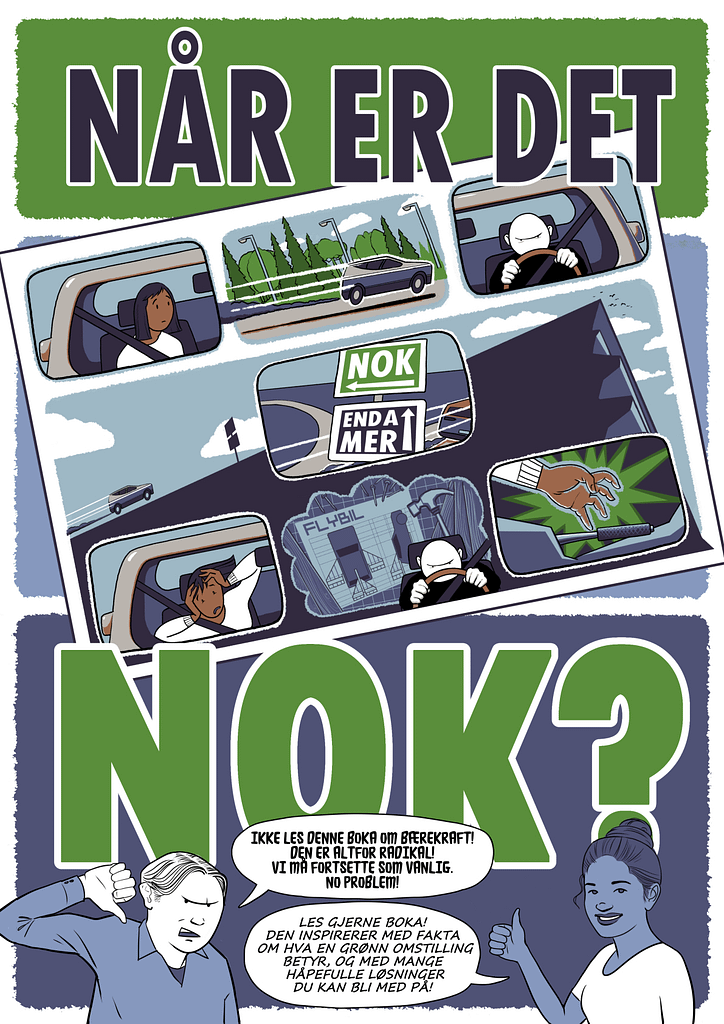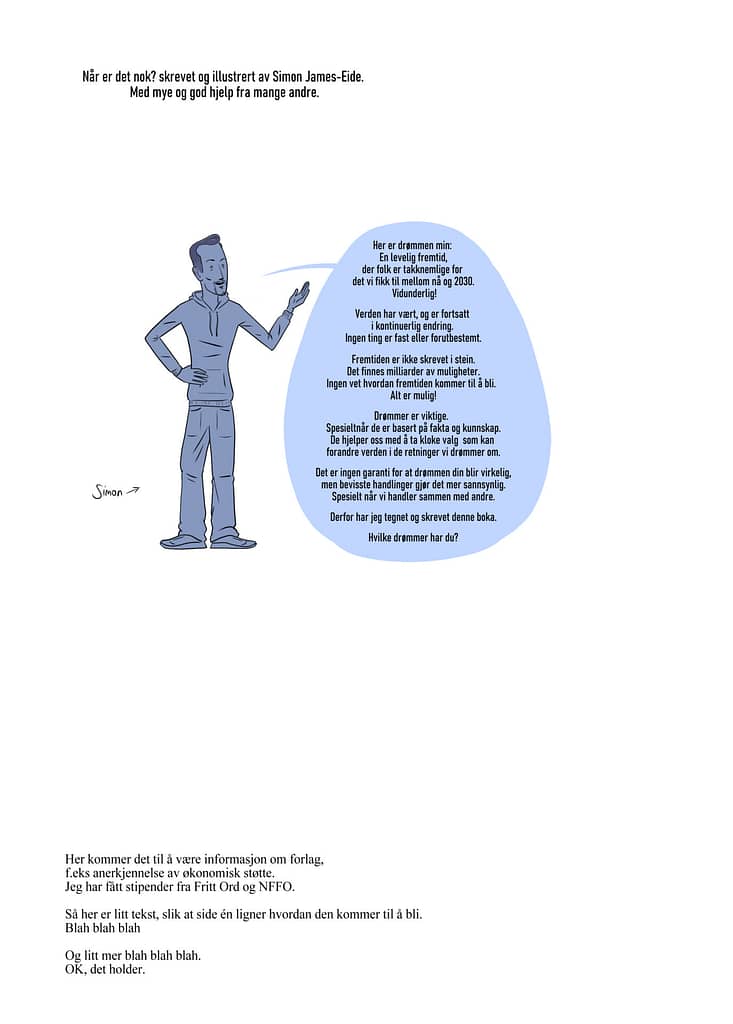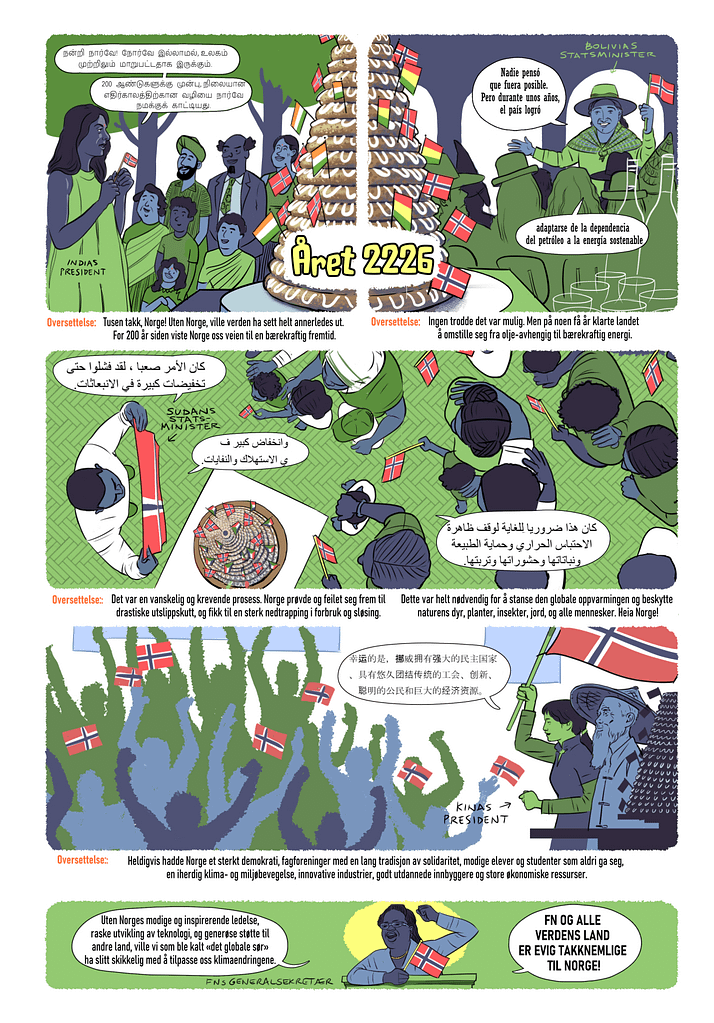Graphic non-fiction book project: When is it Enough?
Grafisk sakprosa-bokprosjekt: Når er det Nok?

This project is under development. I have recently received funding from “Fritt Ord” and NFFO to support this development, which I am extremely grateful for!
The aim of the book is to provide a hopeful vision of the future in order to inspire young people to get involved in the transition to a sustainable society. In addition, it will challenge the despair many face. This includes communicating research-based facts and possibilities.
The book will give an overview of the current unsustainable situation – including the climate emergency – and the many sustainable and regenerative alternatives. Historical precedents for achieving social and systemic transformations will also be spotlighted.
INNSPILL: SKJEMA Dette er en lenke for elever og studenter som er med på manusutviklingen.

The Year 2226 – a vision of a liveable future
Page 1 – a summary of my reason for making the book. A vision of Norway going first, by making a just and fair transition from oil-dependency to sustainability.

Norway has access to enormous resources, both financially and intellectually. The transition will involve a great deal of trial and error. Norway is a relatively small country, so the mistakes will also be relatively small with lower destructive consequences than if we wait for larger countries like the US, China or India. In addition, Norway has the ethical duty to “repay” the extremely high per-capita CO2 emissions emitted since the 1970’s.

At the bottom of each page Lakshmi and Ola comment on the content: Ola plays the “devil’s advocate” & argues for “business as usual” whilst Lakshmi is the voice of the global south, arguing for sustainability.

It all starts when I was 19, on Foundation Year at Brighton Poly, drawing a book about the advertising industry – titled Billboards. The main character (me) is played by my son Nikolai.











In the chip shop, after swimming. Kate Raworth, author of Doughnut economics, just happens to be there too, and joins in the conversation. Later, in Brighton Pavilion, when the young Simon wants to get an historical update on what has happened concerning the limits to growth since 1984, it just so happens that climate expert James Hansen is also there,and recounts his report to the US senate in 1988… These are two of the many experts that young Simon encounters on his journey to Norway, on public transport. He discovers the nature of the current situation, and multiple solutions.